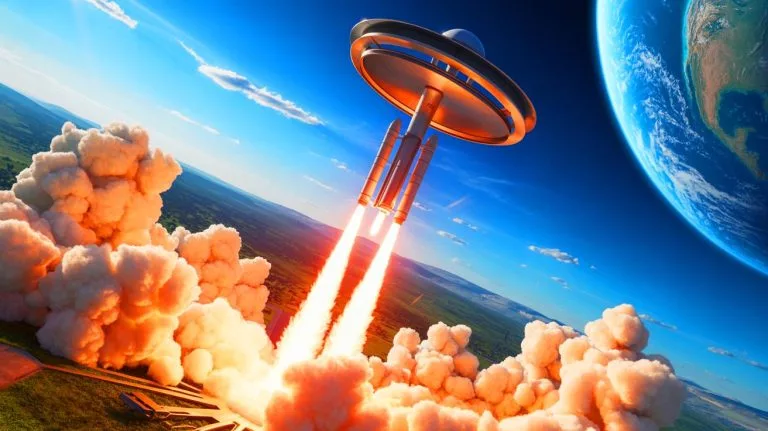| IN A NUTSHELL |
|
In a significant development for space exploration, SpinLaunch, a pioneering startup based in California, is poised to transform the satellite launch industry. The company plans to send hundreds of pancake-like microsatellites into low-Earth orbit using a giant centrifugal cannon. This innovative approach could set a new benchmark for satellite deployment by offering a more cost-effective and environmentally conscious alternative to traditional rocket launches. With the backing of nearly $150 million in funding, SpinLaunch aims to create a sustainable and competitive edge in space technology, challenging established players like SpaceX. This venture marks a pivotal moment in the ongoing quest for sustainable space exploration.
A New Era of Satellite Launches
SpinLaunch is introducing a novel method for launching satellites that could reshape the industry. By utilizing a giant centrifugal cannon, the company aims to reduce both costs and environmental impact. This method involves accelerating spacecraft at high speeds while minimizing the need for traditional rocket fuel. The company is set to launch its Meridian Space constellation, with the first batch of microsatellites ready by next year. These satellites, each measuring 7.5 feet in diameter and weighing around 154 pounds, are designed to be stacked in a “launch bus.” This configuration allows for a lighter payload compared to competitors, potentially allowing SpinLaunch to set a new record for the number of satellites launched simultaneously.
The project has garnered significant financial support, with a recent $12 million investment from Kongsberg Defence and Aerospace. This addition brings SpinLaunch’s total funding to nearly $150 million, indicating strong investor confidence in their groundbreaking technology. KDA’s NanoAvionics will play a crucial role in constructing the first batch of 250 satellites, further enhancing the project’s credibility. The anticipated launch in 2026 could mark a milestone in satellite deployment, potentially setting new industry standards.
The Revolutionary Launch System
SpinLaunch’s approach relies on a sophisticated launch system that uses a vacuum-sealed chamber and spinning arms to propel payloads. The Suborbital Accelerator has already demonstrated its effectiveness, successfully launching 10 rockets into suborbital flight from New Mexico. This process involves spinning payloads at speeds up to 5,000 mph, subjecting them to forces as high as 10,000 Gs before release into the upper atmosphere. The success of these tests, most recently in September 2022, lays the groundwork for an orbital demonstration, where payloads will be sent into low-Earth orbit.
The primary advantage of this system lies in its cost-efficiency. SpinLaunch projects that future commercial launches could cost between $1,250 and $2,500 per kilogram, significantly less than SpaceX’s Falcon 9 rockets. Additionally, the absence of greenhouse gas emissions during launches and the elimination of booster rockets contribute to a more sustainable approach to space travel. This reduction in environmental impact and space debris positions SpinLaunch as a leader in sustainable space exploration.
Implications for the Satellite Industry
The introduction of SpinLaunch’s technology could have profound implications for the satellite industry. By providing a more affordable and eco-friendly launch option, the company is set to challenge established players and reshape the competitive landscape. The Meridian Space constellation aims to offer high-speed communication services at a lower cost than competitors, potentially democratizing access to space-based services.
SpinLaunch’s plans to expand their capabilities with a larger Orbital Accelerator could enable them to launch up to five commercial payloads daily. This ambitious target would increase the frequency and accessibility of satellite launches, opening new opportunities for industries dependent on satellite technology. However, the increased activity in low-Earth orbit raises concerns about potential issues such as spacecraft collisions, light pollution, and interference with astronomical observations.
Looking Ahead: Challenges and Opportunities
While SpinLaunch’s innovations present exciting prospects, they also pose challenges that need addressing. The potential surge in satellite activity in low-Earth orbit could exacerbate issues like space debris and atmospheric pollution from re-entering spacecraft. As the company progresses with its ambitious plans, it will be crucial to consider these factors and strive for sustainable solutions that balance growth with responsibility.
SpinLaunch’s success in upcoming launches could set a new standard for satellite deployment, offering a glimpse into a future where space is more accessible and sustainable. However, the industry is left with a critical question: how will it adapt to these changes, and what measures will be taken to mitigate the risks associated with increased activity in low-Earth orbit?
Did you like it? 4.6/5 (20)







